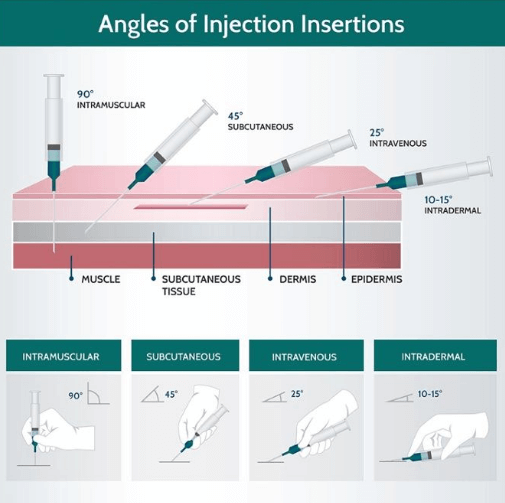
Subcutaneous and intramuscular injection for a dog: how to properly inject, subcutaneous and intramuscular injections
Any dog owner should pay special attention to the health of the pet, because the animal can get sick at any time. Diseases are caused by eating spoiled food, ticks, contact with sick animals. Accordingly, each owner should be able to give injections to a pet, since in some situations there is no time to wait for a veterinarian.
Contents
When are injections needed?
If you suspect a disease in a dog, you must first contact a specialist. Experienced the doctor carefully examines the animal and prescribe appropriate treatment. In particular, injections are shown that need to be done several times a day or a week. Naturally, it is quite difficult to take a sick dog to the hospital every day, so you need to learn how to give injections yourself. To do this, you should get the advice of a doctor, as well as study the instructions for the medicine.
Injection in dogs is recommended in a number of cases:
- the need for urgent medical care;
- the presence of the drug only in the form of a solution in an ampoule;
- the inability to give the animal the drug orally;
- the need for long-term treatment using a specific dosage of a particular drug.
What do you need to know about injections?
Before starting manipulations, you need to make sure that the dog is calm. If she twitches, then the needle may break, and it is very difficult to pull it out.
If the animal is very afraid of injections, you need to make sure that one person gently holds the dog, and the second gives an injection. Best for this put the pet on its side, and immediately after the injection, give him a treat.
Recommendations for owners:
- wash your hands thoroughly;
- wipe the ampoule with a cotton swab dipped in alcohol. After that, you need to carefully file the upper part, although in most modern preparations the ampoules are sold already filed;
- the drug should be heated by holding the ampoule for 10-30 seconds in the hands. Thanks to this, the injection will be less painful;
- the medicine should be carefully drawn into the syringe, and then remove the air from there. The plunger is pressed until a drop of medicine appears at the end of the needle.
Syringe selection
It must be understood that not all syringes are suitable for injections for dogs. If we are talking about intramuscular injection, then you should consider the size of the pet. For miniature breeds and dogs that weigh less than 10 kg, insulin syringes are suitable. Naturally, this applies only to those cases when the animal requires the introduction of no more than 1 ml of the drug. In this situation it is not necessary to monitor the insertion depthbecause the needle is quite short. Of course, this does not apply to injections given to puppies.
Larger breeds of dogs will require syringes sized for 2 ml or more. They have a rather long needle, thanks to which it is possible to reach the muscles. To avoid injury, you can take a needle from another syringe.
It must be taken into account that the aforementioned insulin syringe will not work for intramuscular injection of the drug, because it has a too short needle. In this case, the drug will get under the skin, which will lead to tissue irritation and necrosis.
When choosing a syringe, you should pay attention to the fluidity of the drug, that is, its viscosity. So, some drugs have an oil base, which makes their administration through insulin syringes rather complicated, because the drug will clog the needle.
For subcutaneous injections, almost any syringe is used.
When choosing a product, it is necessary to take into account the following factors:
- needle length and diameter;
- the required amount of medicine;
- drug viscosity.
If possible, you should choose a smaller needle, because this will make the injection less painful.
Subcutaneous injections
To perform such an injection, the area near the knee or withers is best suited, because here the skin is less sensitive. However, it is quite dense, so the needle must be inserted very slowlynot to break it.
You need to remember the following:
- the injection site should not be disinfected, since animals have an antibacterial layer on the skin;
- to avoid infection, do not touch the needle with your hands;
- no need to be afraid to give a hypodermic injection, because there are no important vessels or nerves at the withers.
Making an injection is very simple. So, you need to gently pull the crease between the shoulder blades, remove the hair and insert the needle at an angle of 45º. After that, it is gently pulled out, holding the fold.
Intramuscular injection
In some cases, it is necessary to inject into the muscle. This method of administration is used for antibiotics and drugs that are absorbed rather slowly. It is better to inject into the thigh area or the area near the shoulder.
The following factors must be taken into account:
- the dog’s muscle must be completely relaxed. For this need to be kind to the animal, stroke it and massage the area where the injection will be performed. The paw should be gently bent;
- it is not necessary to treat the skin with alcohol;
- the temperature of the medicine should be approximately 37º C.
The needle is inserted a little further than half way, at an angle of 90º. In this case, it is necessary to take into account the size of the dog. If its weight does not exceed 10 kg, then a depth of 1-1,5 cm is required. For large dogs, this parameter is 3-3,5 cm.
Performing an intramuscular injection can be difficult:
- if you feel something hard under the needle, then you need to pull it back;
- if a drop of blood appears on the surface of the skin, this indicates a puncture of the vessel. In this case you need to carefully remove the needle, wipe the blood with a cotton swab dipped in alcohol and choose another injection site;
- if you accidentally hit a nerve, the dog will limp slightly.
It should be understood that intramuscular injection in dogs always results in minor muscle injury. This is especially true in cases where an infusion of a large amount of medication is indicated. Therefore, it is necessary to take into account the speed of its infusion. As a rule, 0,5 second is required for 1 ml of solution. Do not inject too slowly, because the dog may feel fear. As a result, she will begin to get nervous and twitch.
The consequences of the injection
Even if you inject correctly, some problems are not ruled out. So, the dog may feel discomfort, because of which it will become restless. It should be understood that some drugs have an irritating effect, so they are pre-mixed with an anesthetic drug. The compatibility of medicines must be checked in the instructions.
It is important to remember that an injection is a kind of tissue injury, therefore possible bleeding due to violation of the integrity of blood vessels. A small amount of blood is wiped with a cotton swab moistened with alcohol. If there is a lot of blood, you can make a cold compress. With heavy bleeding, urgent veterinary attention is needed.
In some cases, after the injection, the animal may tighten its paw, which is considered a normal reaction. If the pet pulls its paw, this indicates a hit in the bundle of nerves. To eliminate such complications, novocaine blockade is used.
To inject your dog yourself, you need to be patient. Do not yell at the animal or suppress its resistance. It is enough to stroke the pet, thanks to which he will calm down and stop being nervous. Only then can the injection be started.





